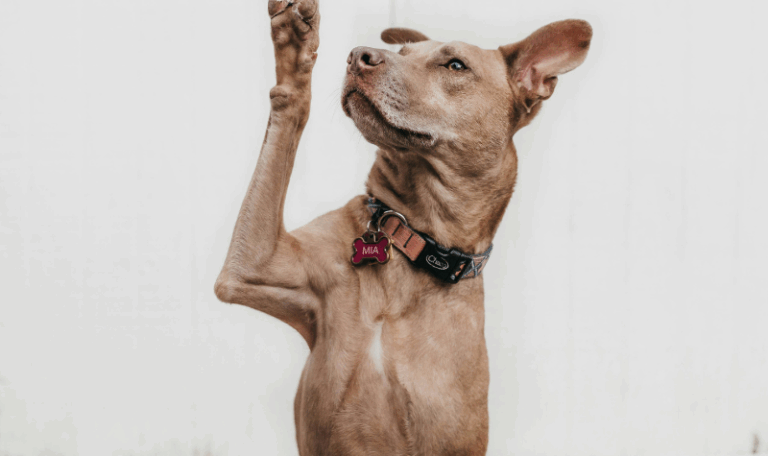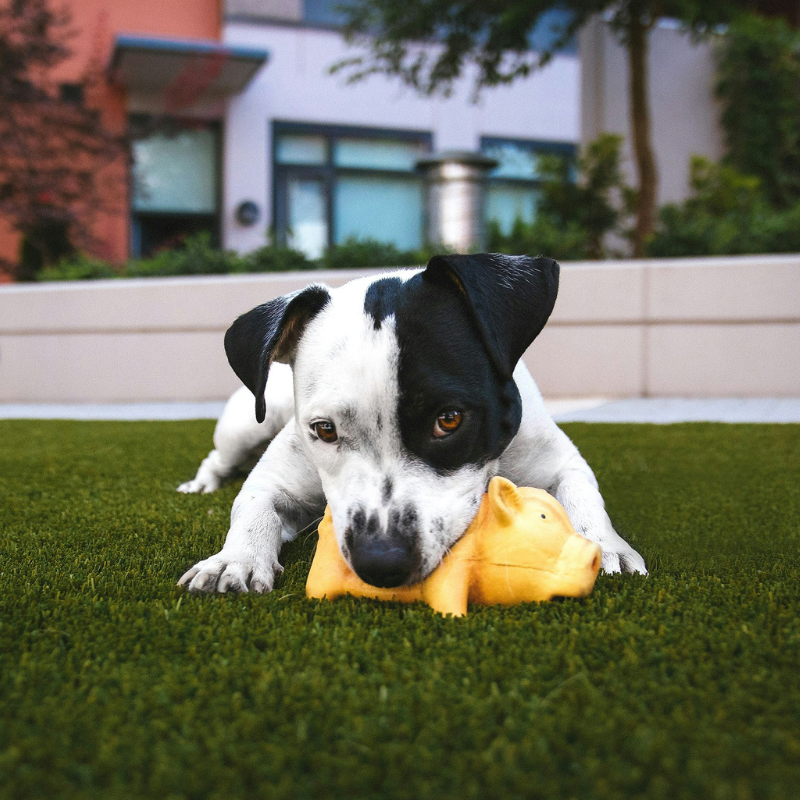Choosing the best training method for your dog is a significant decision. For pet owners seeking effective solutions, dog board and train programs in Tarpon Springs present a compelling option. These programs, designed for intensive, immersive training, have gained immense popularity for their effectiveness in addressing various behavioral challenges. But how do these programs work, and are they the right fit for your dog? Let’s delve into the details.
What Are Dog Board and Train Programs?
Dog board and train programs involve sending your pet to a professional trainer’s facility for an extended period, typically ranging from two to six weeks. These programs are structured to provide consistent, focused training without the distractions of a home environment. As mentioned in the blog How Does Dog Board and Train Work?, the immersive nature of these programs allows dogs to receive individualized attention tailored to their specific needs.
Key Features of Board and Train Programs
- Consistency: Trainers work with dogs daily, ensuring that commands and behaviors are reinforced regularly.
- Customization: Training plans are designed to address the unique behavioral challenges of each dog.
- Controlled Environment: Distractions are minimized, enabling dogs to focus solely on learning.
Benefits of Dog Board and Train Programs
Accelerated Learning
One of the standout advantages of board and train programs is the speed at which dogs learn new behaviors. The intensive, daily sessions create a routine that reinforces positive habits effectively. As highlighted in the blog How Long Does a Typical Board and Train Program Last?, shorter programs of two weeks focus on foundational obedience, while extended programs address deeper behavioral issues like aggression or anxiety.
Addressing Complex Behaviors
For dogs with severe issues such as aggression or extreme anxiety, board and train programs offer the consistency and expertise necessary to tackle these challenges. Trainers can use desensitization techniques, counter-conditioning, and other specialized methods in a controlled environment, including dog aggression training in Tarpon Springs.
As mentioned in the blog What Are the Common Mistakes to Avoid During Obedience Training?, lack of consistency and exposure to distractions often hinder progress at home. Board and train programs eliminate these pitfalls, making them particularly effective for dogs needing focused interventions.
Enhanced Communication Between Dogs and Owners
Board and train programs don’t just train dogs; they also educate owners. Trainers provide detailed handoff sessions to ensure owners understand how to maintain their dog’s progress. As noted in the blog Is There Follow-Up Training or Support After the Dog Returns Home?, follow-up sessions and ongoing support are critical to reinforcing learned behaviors and preventing regression.
Comparing Board and Train with Other Training Options
In-Home Training
In-home training offers personalized attention within the dog’s familiar environment. However, it lacks the intensive consistency of board and train programs. As mentioned in the blog Do Dog Trainers Offer In-Home Training Sessions?, while in-home sessions are great for addressing behaviors specific to the home, they may not be as effective for deeply ingrained issues.
Group Classes
Group classes provide socialization opportunities but can’t match the tailored attention of board and train programs. As highlighted in the blog What’s the Difference Between Group Classes and Private Dog Training Sessions?, group settings are better suited for dogs with foundational training who need to practice skills in a social context.
Key Considerations When Choosing a Board and Train Program
Trainer Qualifications
Ensure that the trainer has the experience and credentials to handle your dog’s specific needs. Certifications from organizations like the International Association of Canine Professionals (IACP) or the Certification Council for Professional Dog Trainers (CCPDT) indicate a trainer’s expertise. As noted in the blog What Qualifications Should a Dog Trainer Have?, a qualified trainer is essential for a successful outcome.
Program Duration
The length of the program should align with your dog’s needs. Shorter programs are ideal for basic obedience, while longer sessions address complex behaviors. As detailed in the blog How Long Does a Typical Board and Train Program Last?, extended programs often result in deeper behavioral adjustments and better long-term outcomes.
Real-Life Success Stories
Bella’s Transformation
Bella, a rescue dog with severe anxiety, benefited immensely from a board and train program. Trainers used a combination of positive reinforcement and gradual exposure techniques to build her confidence. Over several weeks, Bella learned to remain calm around new people and environments. As detailed in the blog How Does Dog Board and Train Work?, these programs excel in addressing complex issues like Bella’s.
Max’s Journey
Max, a Labrador retriever with aggression issues, underwent an extended board and train program. The structured environment allowed trainers to work on desensitization techniques, leading to significant improvements in his behavior. Follow-up training sessions with Max’s owners ensured these changes were maintained at home.
Common Commands Taught in Board and Train Programs
Board and train programs focus on teaching essential commands that promote safety and good behavior. These include:
- Sit: A foundational command for maintaining control.
- Stay: Encourages patience and reduces impulsive behavior.
- Come: Ensures a reliable recall, crucial for safety in public spaces.
- Heel: Promotes calm, controlled walks.
- Leave It: Prevents dangerous interactions with harmful objects.
As mentioned in the blog What Are the Essential Commands Every Dog Should Know?, these commands form the backbone of effective training.
Maintaining Success After Training
The transition home is a critical phase. Trainers provide tools and guidance to ensure your dog continues to thrive. As highlighted in the blog How to Maintain Consistency in Obedience Training at Home, incorporating training into daily routines is key to sustaining progress.
What Types of Dogs Are Not Good Candidates for Board and Train?
Not all dogs are ideal candidates for board and train programs. Dogs with severe separation anxiety may struggle in an unfamiliar environment. These dogs often require gradual, in-home desensitization before transitioning to more intensive training. Additionally, dogs with health issues or those who require constant medical attention may not thrive in these programs, as their needs may surpass the scope of what trainers can provide in a boarding setting.
What Types of Dogs Typically Have Separation Anxiety, and What Causes It?
Separation anxiety often affects dogs with specific personality traits, life experiences, or breeds predisposed to strong emotional bonds. Dogs that are highly attached to their owners, such as those adopted from shelters or rescue organizations, are at a higher risk. Breeds known for their loyalty and sensitivity, including Labrador Retrievers, Border Collies, and German Shepherds, may also be more prone to developing separation anxiety.
The root causes of separation anxiety are varied and can stem from past traumas or significant life changes. For instance, dogs who have experienced abandonment, long periods in shelters, or multiple rehoming situations may develop a heightened fear of being left alone. Additionally, sudden changes in routine, such as a new job requiring extended absences or a move to a different home, can trigger this condition. Puppies that were not properly socialized or weaned too early may also struggle with anxiety when separated from their owners.
Understanding these underlying causes is vital for addressing separation anxiety effectively. Tailored training approaches, gradual desensitization, and professional guidance can make a significant difference in helping dogs overcome their fears and build confidence. Whether through in-home training or board and train programs, addressing the unique needs of these dogs ensures they lead happier, more secure lives.

What Types of Dogs Are Perfect for Board and Train?
Board and train programs are ideal for dogs with moderate to severe behavioral challenges, such as aggression, leash reactivity, or extreme anxiety. Puppies or newly adopted dogs can also benefit, as these programs provide a solid foundation in obedience and socialization. Active dogs with high energy levels often excel in board and train environments, where they receive structured physical and mental stimulation daily.
What Types of Dogs Usually Have Aggression, Leash Reactivity, or Extreme Anxiety, and What Are the Causes?
Aggression, leash reactivity, and extreme anxiety can manifest in dogs of all breeds, but certain factors, such as temperament, past experiences, and breed tendencies, play significant roles in their prevalence.
Types of Dogs Prone to These Behaviors
- Aggression:
- Protective Breeds: Dogs like German Shepherds, Rottweilers, and Dobermans, bred for guarding and protection, may exhibit aggression if not socialized or trained properly.
- Territorial Dogs: Breeds such as Akitas and Chows can be predisposed to guarding their territory, which might escalate to aggressive behaviors in unfamiliar situations.
- Rescue Dogs: Dogs from shelters or rescue organizations, particularly those with a history of abuse or neglect, often display aggression as a defensive mechanism.
- Leash Reactivity:
- High-Energy Breeds: Dogs like Border Collies, Australian Shepherds, and Jack Russell Terriers, with high energy levels and strong prey drives, are prone to leash reactivity if their exercise and mental stimulation needs aren’t met.
- Under-Socialized Dogs: Dogs that haven’t been exposed to various stimuli during their critical socialization period (3–14 weeks of age) often overreact to other dogs, people, or unfamiliar objects when on a leash.
- Extreme Anxiety:
- Companion Breeds: Breeds bred for close companionship, such as Cavalier King Charles Spaniels, Chihuahuas, and Maltese, can develop extreme anxiety due to their dependency on human interaction.
- Rescue and Shelter Dogs: Similar to aggression, dogs with traumatic pasts or inconsistent environments often develop deep-seated anxieties.
- Breeds Prone to Nervous Dispositions: Some breeds, like Greyhounds and Whippets, are naturally more sensitive, making them prone to fear-based anxiety in stressful or unfamiliar situations.
Causes of These Behaviors
- Aggression:
- Poor Socialization: Dogs that weren’t exposed to diverse environments, people, or other animals during their developmental stages may perceive new situations as threats.
- Trauma or Abuse: Negative experiences, such as physical harm or neglect, can result in defensive aggression.
- Frustration or Resource Guarding: Dogs may act aggressively when prevented from accessing something they want (frustration) or when protecting valued resources like food, toys, or space.
- Leash Reactivity:
- Barrier Frustration: Dogs on a leash can feel restricted in their ability to interact with stimuli, leading to frustration and reactive behaviors.
- Lack of Exercise: Insufficient physical and mental stimulation can cause pent-up energy that manifests as reactivity.
- Fear or Insecurity: For some dogs, reactivity on a leash stems from fear of unfamiliar dogs or people, exacerbated by the lack of an escape route.
- Extreme Anxiety:
- Changes in Environment or Routine: Moving to a new home, a change in the household dynamic, or a significant disruption in routine can trigger anxiety.
- Genetic Predisposition: Some breeds or individual dogs are naturally more prone to anxiety due to their genetic makeup.
- Trauma or Negative Experiences: A history of abandonment, neglect, or harsh punishment can lead to deep-rooted fears and anxiety.
Understanding the types of dogs prone to these behaviors and their causes helps tailor effective interventions, such as socialization, desensitization, and structured training programs. Whether addressing aggression, leash reactivity, or anxiety, professional trainers can create personalized plans to help dogs overcome their challenges and thrive.
Conclusion
Dog board and train programs in Tarpon Springs offer an unparalleled approach to addressing behavioral challenges and enhancing your dog’s obedience. With professional guidance, a structured environment, and tailored training plans, these programs ensure lasting results that benefit both dogs and their owners. For dogs exhibiting aggressive tendencies, specialized programs like dog aggression training in Tarpon Springs are available to address and manage these behaviors effectively. By investing in a board and train program, you’re not just training your dog; you’re fostering a stronger, more harmonious relationship. If you’re considering this transformative option, explore the best dog board and train in Tarpon Springs programs and start your journey toward a well-behaved, happy pet.

